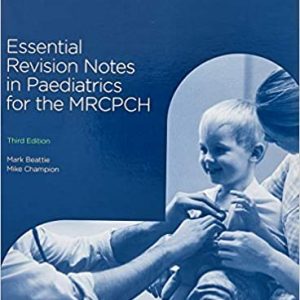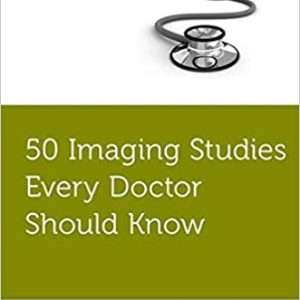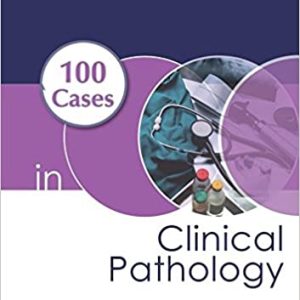Description
“**CURRENT Medical Diagnosis and Treatment 2025**” (CMDT 2025) is the latest edition of the widely respected and comprehensive medical reference book, published by McGraw-Hill. It is used by healthcare providers around the world to stay current with the latest in medical diagnosis and treatment protocols. Here’s a general overview of what you can expect from CMDT 2025:
### Key Features of CMDT 2025:
1. **Up-to-date information**: CMDT 2025 offers the most current evidence-based practices, including the latest diagnostic tools, therapeutic guidelines, and drug information. This ensures clinicians can provide the best care based on the newest research.
2. **Comprehensive Coverage**: The book covers the entire spectrum of internal medicine, including:
– **Medical conditions**: From common diseases to rare conditions across all specialties.
– **Pharmacology**: Updates on new medications, drug interactions, dosing guidelines, and adverse effects.
– **Prevention and Health Maintenance**: Updated immunization schedules, screening recommendations, and preventive care strategies.
3. **Concise yet detailed**: Each chapter provides concise, yet detailed information on the diagnosis, management, and treatment of conditions. The chapters are written in a structured format for easy reference.
4. **Practical, Clinical Focus**: CMDT emphasizes practical information for clinicians, with a focus on treatment algorithms, diagnostic strategies, and evidence-based practices that can be applied in real-world settings.
5. **Diagnosis and Treatment Algorithms**: The text includes helpful flowcharts and algorithms for making decisions in the clinical setting, particularly for common conditions like hypertension, diabetes, and infections.
6. **Updated Guidelines**: The CMDT 2025 incorporates updated national and international guidelines, including those from organizations like the CDC, WHO, and other key health bodies, ensuring that treatments reflect the latest standards of care.
### Major Areas Covered:
1. **Infectious Diseases**: Current protocols for managing bacterial, viral, fungal, and parasitic infections, including antibiotic stewardship practices, emerging infectious diseases, and updated vaccination schedules.
2. **Cardiovascular**: Up-to-date management strategies for conditions like hypertension, coronary artery disease, heart failure, arrhythmias, and stroke prevention.
3. **Endocrine**: Guidelines for treating diabetes, thyroid disorders, adrenal disorders, and metabolic syndrome.
4. **Pulmonary**: Treatment of conditions like asthma, COPD, pneumonia, pulmonary embolism, and lung cancer, including the latest in inhaler technology and guidelines.
5. **Renal and Electrolyte Disorders**: Updates on acute and chronic kidney disease, dialysis options, and management of electrolyte imbalances.
6. **Gastroenterology**: Current management of gastrointestinal diseases such as liver disease, IBD, and gastrointestinal cancers.
7. **Neurology**: Up-to-date treatment of stroke, seizures, migraines, dementia, multiple sclerosis, and movement disorders.
8. **Hematology/Oncology**: Advances in the management of blood disorders like anemia, clotting disorders, leukemia, and solid tumors.
9. **Rheumatology**: Current guidelines for autoimmune diseases like rheumatoid arthritis, lupus, and other connective tissue disorders.
10. **Mental Health**: Updates on the management of psychiatric disorders like depression, anxiety, schizophrenia, and bipolar disorder.
11. **Pediatrics**: Pediatric-specific diagnosis and treatment strategies, from infancy through adolescence.
12. **Geriatrics**: Focus on the unique needs of the aging population, including management of dementia, polypharmacy, frailty, and chronic disease management in older adults.
13. **Emergency Medicine**: Protocols for common medical emergencies such as acute MI, trauma, sepsis, shock, and respiratory failure.
### Additional Features:
– **Patient Education**: Includes tools for clinicians to educate patients about their conditions and treatment plans.
– **Online Access**: With the purchase of CMDT, many editions offer online access, which provides searchable content, making it easier to find answers quickly.
– **International Perspective**: In addition to US-specific guidelines, CMDT takes into account global health issues, making it a resource for clinicians worldwide.
### How to Use:
– **Quick Reference**: The book is designed to be a quick reference guide. Each condition is presented in a consistent format, with a focus on practical, actionable information that clinicians can implement immediately in patient care.
– **Diagnosis & Treatment**: It offers step-by-step approaches to diagnosing and managing a wide variety of diseases, with a focus on making the correct diagnosis and implementing the most effective treatments.
### Conclusion:
“**CURRENT Medical Diagnosis and Treatment 2025**” is an invaluable resource for healthcare providers seeking the most current and practical medical knowledge. Whether you’re a medical student, resident, attending physician, or other healthcare professional, this text provides essential information to stay up-to-date in the ever-evolving field of medicine.





Reviews
There are no reviews yet.